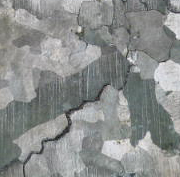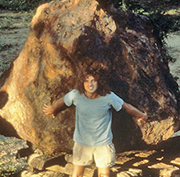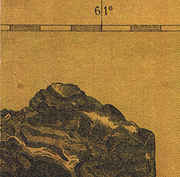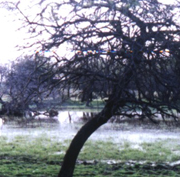Official Name:
Campo del Cielo is the name of the arid plain where this meteorite was found. But the plain gets its name from the meteorite! Dozens of place names were given to the fragments of this meteorite, which were found over a very large area.
Location:
Northwest of the village of Chorotis, straddling the border between the Argentine states of Chaco and Santiago del Estero. The region is situated 800 kilometres northwest of Buenos Aires.
Fall or Find:
Campo del Cielo is a find. Carbon samples found under the ejecta from the craters were dated using carbon 14. The date obtained was 5 800 years ago. So the craters cannot be older than that. The fragments are altered and rusted, but some areas present a fresh crust, which points to a fall in the recent past. Most of the dates proposed vary between 4 000 and 5 800 years ago.
Date:
Spanish explorers discovered the meteorite in 1576. It was already known to the indigenous people.
Mass Recovered:
At least 100 metric tons of the Campo del Cielo meteorite have been recovered over the last five centuries. If we consider the total mass of the fragments, it is the largest meteorite in the world. The largest individual fragment of Campo del Cielo weighs 37 metric tons.

Enlargement
Cut of a fragment of Campo del Cielo, the Widmanstätten bands are very wide. |
|

Enlargement
Robert Haag standing in front of a 37-metric-ton mass that he hoped to add to his collection. |
|
Number of Fragments:
Thousands of fragments were collected. Three fragments alone-weighing 15, 18, and 37 metric tons-account for two thirds of the meteorite's mass.
Strewn field:
The craters are oriented from northeast to southeast, forming an impressive strewn field of 18.5 by 3 kilometres.
Crater:
Some twenty craters have been identified to date. The largest is 100 metres in diametre and the smallest, 20 metres. The largest craters contain no fragments-they were ejected on impact. Some impact structures are elliptical in shape. This form is due to the angle of fall of the meteoroid fragments. They struck the ground at an angle of 9 degrees to the horizon.

Enlargement
Map made in 1883 for a new expedition to the Campo del Cielo region. The first two masses discovered are shown. |
|

Enlargement
The Saint Augustine crater fills with water during the rainy season. |
|
Circumstances:
Spanish explorers discovered the meteorite with the help of native people who told them about a mass of iron that fell from the sky. The Spaniards collected a few fragments of the meteorite during expeditions in the area between 1576 and 1783. A 15-metric-ton mass was discovered in 1813 by a man named Don R. de Celis. Several masses weighing from several hundreds of kilograms to a few tons were found in the nineteenth and twentieth centuries. Each fragment was given a name : Mesón de Fierro, Runa Pocito, Toba, Hacha, Mocovi, Tonocote, Abipon, and Mataco. One of the most recent discoveries was in 1970. An 18-metric-ton fragment was revealed during excavation of a crater by a scientific team. It lay 5 metres below the bottom of the crater.
History:
In 1990, a mineral collector promised Robert Haag that he could arrange the purchase of a Campo del Cielo meteorite weighing several tons. The mineral collector supposedly had an agreement with the owner of the land where it lay. Haag paid the negotiator and travelled to Argentina accompanied by an entire team to transport the enormous mass. Once the meteorite had been loaded on a truck, the police arrested Haag. In this province of Argentina, meteorites belong to the government and not to the landowner. Haag had to pay a fine for attempting to steal a national treasure. He had been duped! This meteorite fragment is still in its home province.
Type:
Iron meteorite
Class:
Coarse octahedrite: 3-millimetre bandwidths.
Group:
IAB
Composition:
Campo del Cielo contains 6.68% nickel, 0.43% cobalt, 0.25% phosphorus, 87 parts per million gallium, 40 ppm germanium, and 3.6 ppm iridium. All the rest is iron.
This iron meteorite is distinguished by the presence of silicate inclusions in its iron matrix. The few octahedrites that present this feature were probably formed by a process other than melting and differentiation.
Scientific contribution:
Researchers who have studied the Campo del Cielo strewn field have noticed a reddening of the clay near the points of impact. According to these scientists, the same phenomenon might explain the colours seen on the surface of Mars.
Part of the Planétarium's collection:
Yes